Clutching your bus day ticket, you clamber aboard the busy Kyoto bus that pulls up in front of you. Finding a seat, you keep one eye on the LED display at the front of the vehicle and one on the route map. The efficient and punctual service takes you on a meandering tour through the low-lying and historical town. Ancient temple roofs punctuate the skyline and bright red ceremonial gateways appear at the side of the road, leading to mysterious shrines. As the terrain outside the bus becomes hillier, you edge towards your final destination. The trees around you begin to set the mood for the temple you are heading for. Pulling up, the bus lets you off outside a verdant-lined pathway that leads to the spectacularly set Temple of the Golden Pavilion; Kinkaku-ji.
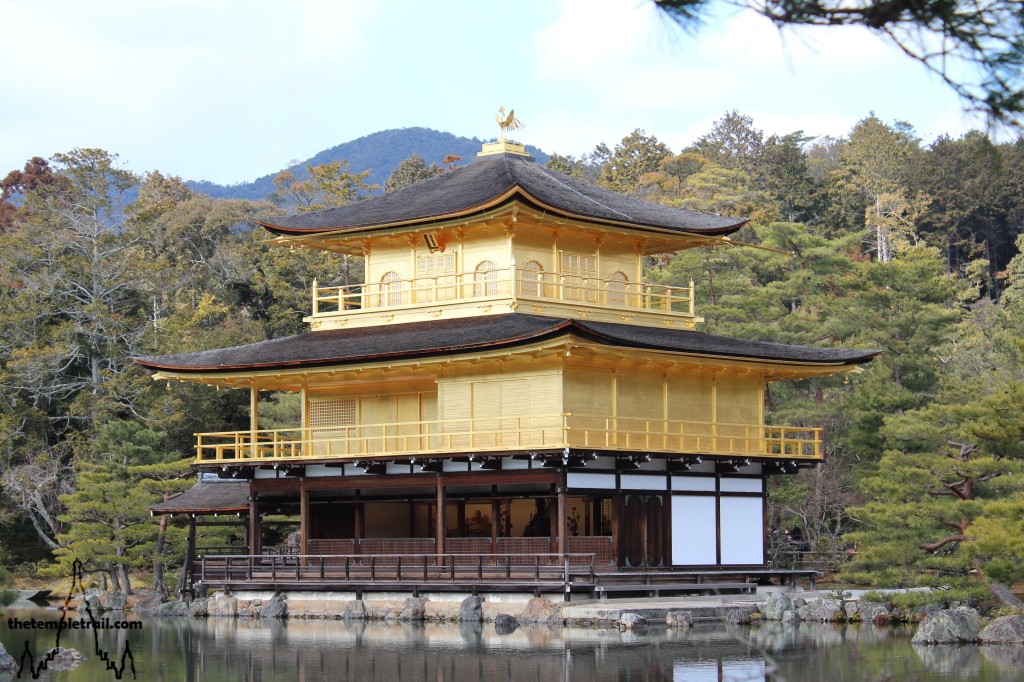
Rokuon-ji, as it is actually called, means Deer Garden Temple and it is the gardens of this wonderful place that really elevates it above the rest. It is a profoundly beautiful Zen Buddhist temple that incorporates structure and nature. Considered a gem of Muromachi Period (1337 – 1573) garden design, the buildings are fully integrated into the landscaped environment that surrounds them. Originally the personal villa of Saionji Kintsune, an important statesman, it was purchased by the 3rd Ashikaga shogun, Ashikaga Yoshimitsu, in 1397. Yoshimitsu began work on his retirement villa, Kitayama-den, three years year later. When Yoshimitsu died in 1408, his son Ashikaga Yoshimochi converted the villa into a Rinzai Sect Zen temple, in accordance with his father’s will. The founding of the temple was also to honour the famous Rinzai monk Musō Soseki, who greatly influenced garden design until his death in 1351. Kinkaku-ji is strongly influenced by Saihō-ji and its well-known moss garden, designed by Musō Soseki in 1339.
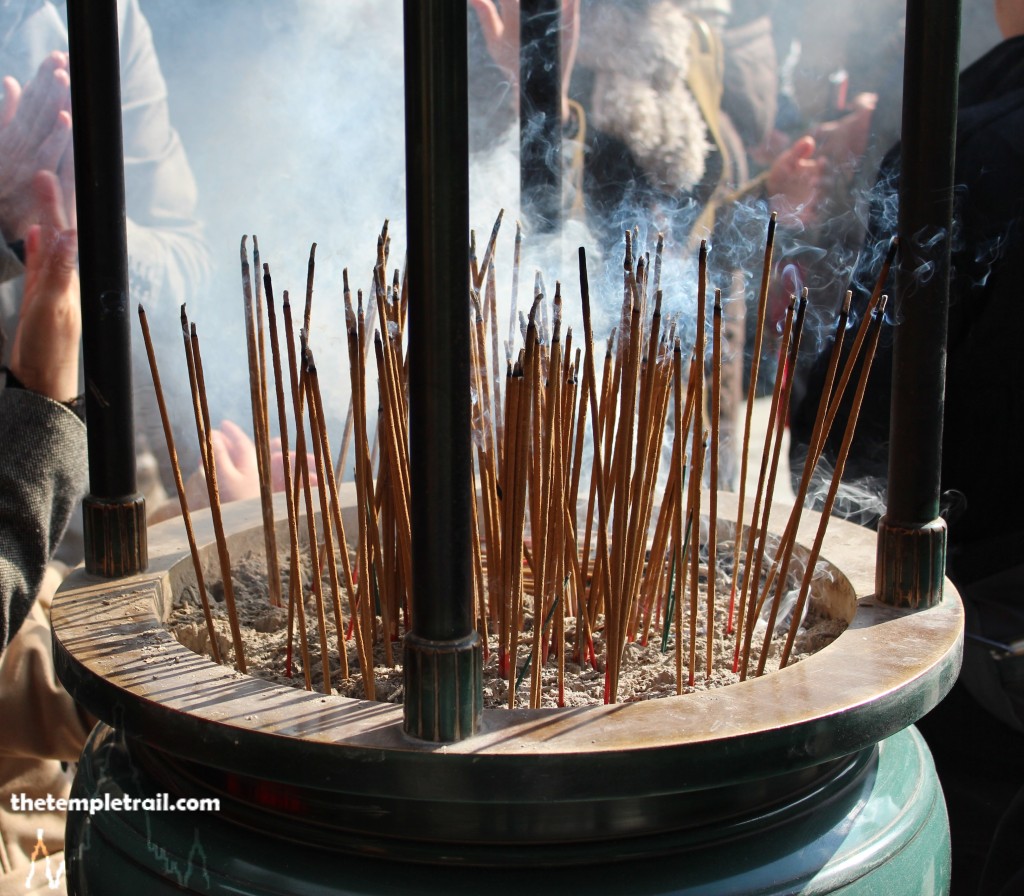
Kinkaku-ji suffered destruction on more than one occasion. Notably this happened during the Ōnin War (1467–1477), where all of the buildings, save the golden pavilion itself, were burned to the ground. This was an ominous omen and the Warring States Period that came after the war, saw the fall of the Ashikaga shogunate and the eventual rise of the Tokugawa shogunate in 1600. The Tokugawa rulers unified Japan and moved the capital away from Kyoto to Edo (modern day Tokyo). It is fitting that the golden building and its surrounding grounds have become a symbol of the glory years of the Ashikaga shogunate and the supremacy of Kyoto. The beautiful temple suffered an even greater tragedy in 1950 when a novice monk suffering from schizophrenia burned the golden pavilion down. It was rebuilt in 1955 with an even more splendid golden finish. The legacy of the temple has been long-lived and it was the blueprint for many others including Ginkaku-ji (Temple of the Silver Pavilion) built by the 8th Shogun, Ashikaga Yoshimasa between 1484 and 1490.
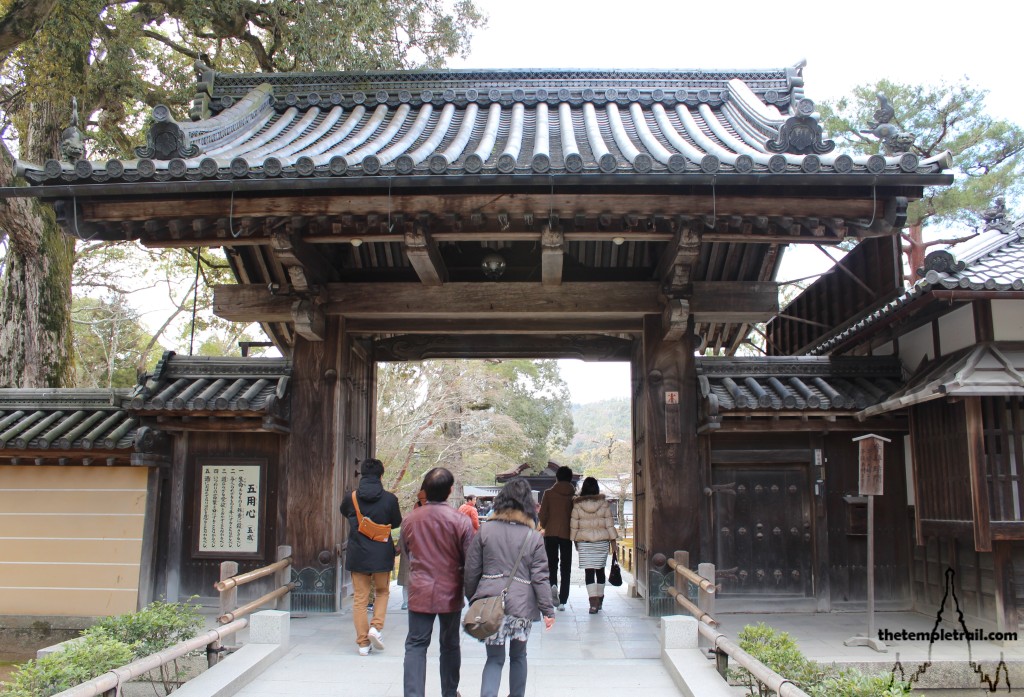
Proceeding through the spartanly named First Gate you stand in the forecourt of the temple grounds. To your right is the kuri (priests’ quarters). The building is an imposing structure of white and black that dominates the courtyard. Its doors are firmly closed and you are compelled to go through the second gate. As you do, you break out into a wonderland of natural colours. Ahead of you lies one of the most beautiful gardens in the world. The taming of nature with just the slightest hand, chaos and order meet somewhere in the middle; a perfect example of Buddhism’s Middle Way. Upon entering the garden, your attention is called by the eponymous Kinkaku. From wherever you stand, the golden pavilion is squarely the centre of your vision.
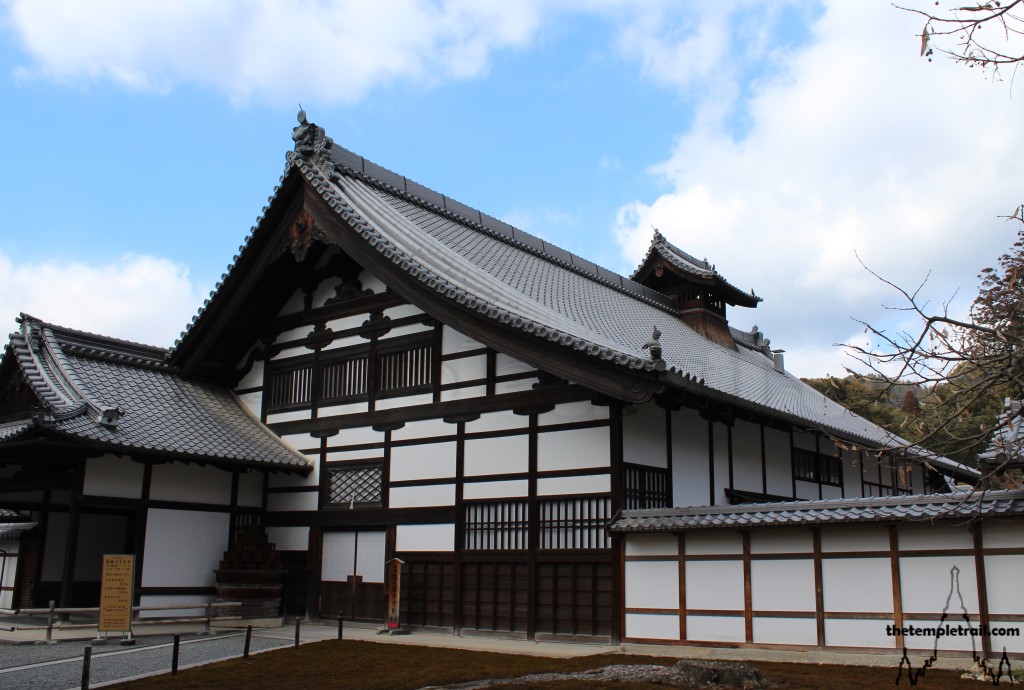
Formally known as the Shari-den, the relic pavilion is unforgettably striking. You cannot avert your gaze from its golden walls. Looking across the Kyoko-chi (mirror) pond, you are charmed by the pavilion and its reflection in the aptly named waters. The three storey structure is a marvel and each floor represents a different style of architecture. The ground floor is in the shinden-zukuri, or palace style. This style developed in the Heian Period of Kyoto (794-1185). This floor, called The Chamber of Dharma Waters, employs natural wooden pillars and white plaster to provide a simple foundation to the gilded upper storeys. It is smaller than the middle floor and has a veranda that looks out over the pond. The contrast makes the top two levels all the more remarkable. From your position on the other side of the water, you see through the open screens and past the shitomido (reticulated shutters) at the front. Inside statues of Shaka Nyorai (the Historical Buddha) and Ashikaga Yoshimitsu occupy the space that you cannot enter into.
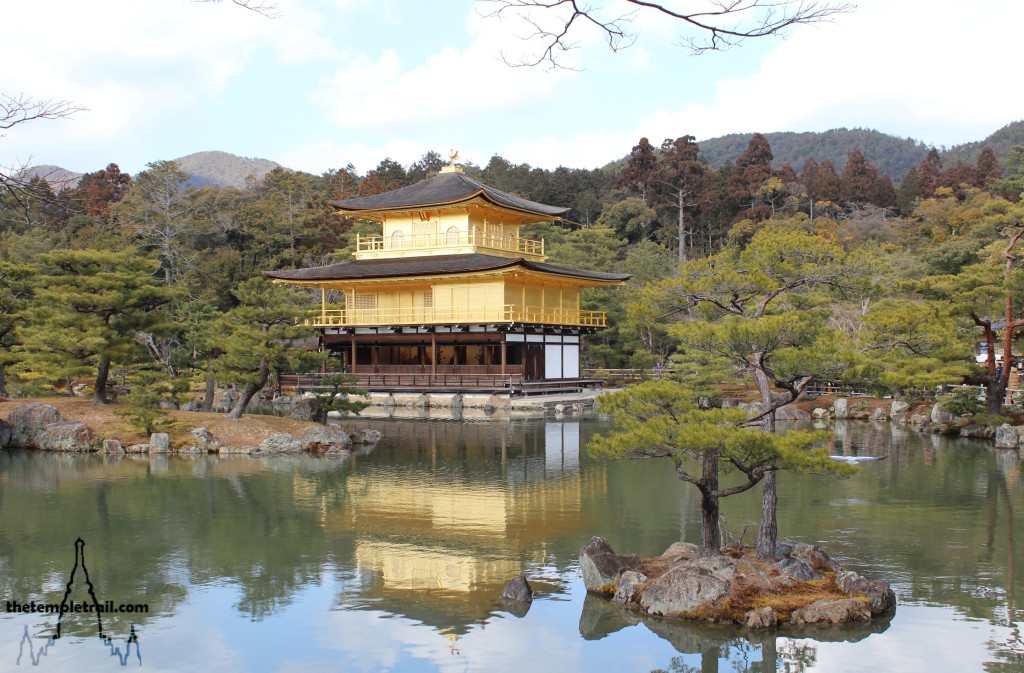
The middle floor is built in the buke-zukuri style, projecting the aesthetics of a samurai homestead. It is more practical and less elaborate than the aristocratic palace-style. The military aesthetic came into its own following the fall of the Heian court and the rise of the samurai. The simple design reflects the wish to keep focus away from the whimsical pleasures of the arts. This floor is, like the top floor, totally gilded in gold leaf. The gilding of this plain style of architecture presents a mixed message of stoicism and epicureanism. It is named Tower of Sound Waves and is a Buddha Hall or Butsuden. Within its golden walls is a statue of the bodhisattva Kannon (Guānyīn). Around her are the Shitenno (Four Heavenly Kings).
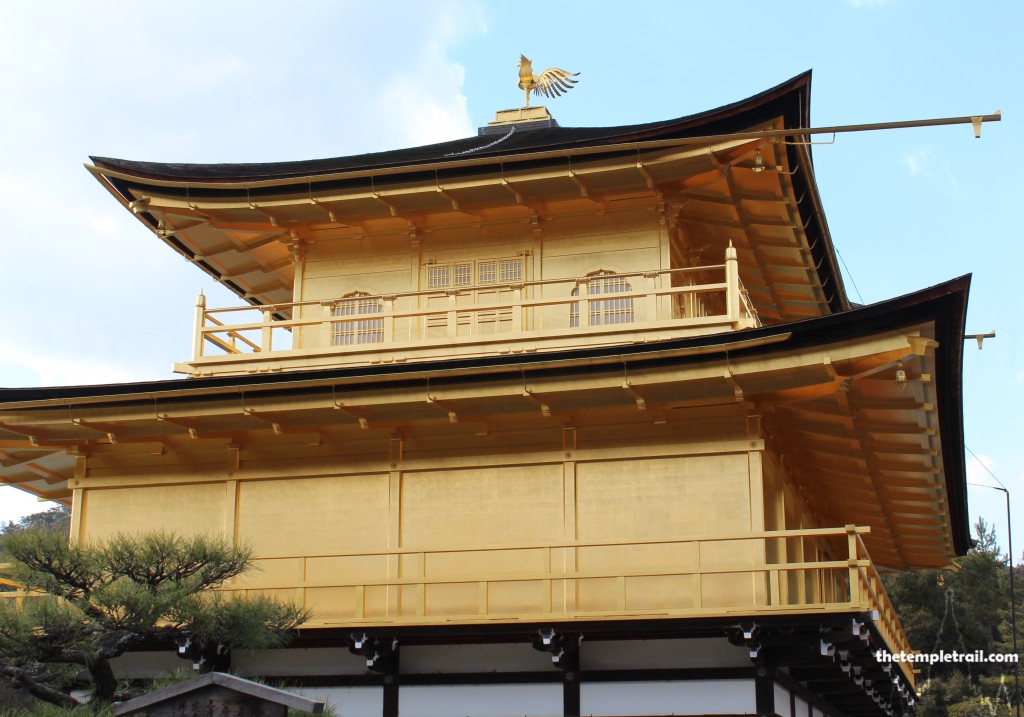
The top floor is in the karayo or zenshū-butsuden-zukuri style of a Zen Buddhist temple. This is originally a Chinese style from the Chan (Zen) temples of China. This floor is gilded on both the outside and inside reflecting its importance. It has cusped ogee windows and dǒugǒng (Chinese cap and block roof brackets). Within this, the smallest chamber, is a reliquary that holds some of the ashes of the Buddha. It is known as the Cupola of the Ultimate, clearly indicating its significance in crowning the hall and containing the relics. The mix of styles form one unified building that nods to the Kitayama culture that flourished among the aristocracy of Kyoto during the reign of Ashikaga Yoshimitsu. The building is topped with shingles and a golden Chinese phoenix. The upper two floors that you see in reality and reflected in the lake are gilded not only to show their importance, but also to purify negative thoughts about death. Interior connects with exterior. Looking at the outside, knowing what is inside, your mind is lulled and dazzled at the same time by the classic Muromachi Period structure.
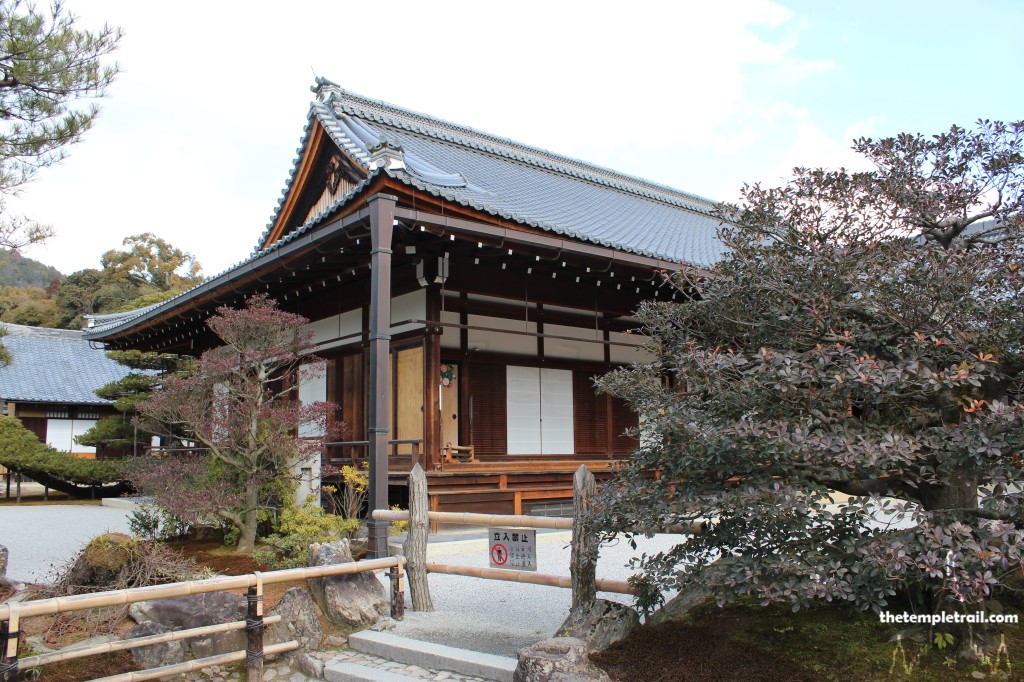
You make your way toward the shining beacon and to your right is the hojo. The former living quarters of the head priest is not quite as impressive as the smaller golden building, but it eclipses the relic building. The doors are closed, concealing the famed tatami room and its hand painted fusuma-e (sliding doors). The panels were painted by famed draughtsman and painter Kano Geki (Atsunobu) in 1681. The room also holds the original phoenix from the Kinkaku roof. You draw nearer to the Kinkaku and pass behind it. Even though the structure is a reconstruction, you find it no less inspiring. The thick gilding from the 1980s refurbishment shimmers, even on an overcast day. In the water next to the pavilion, four stones in a straight line represent boats bound for the mythological Chinese Island of Eternal Life. This fittingly marks the start of your own journey through the temple grounds. With your focus remaining partly on the Kinkaku, you begin the half circuit of Kyoko-chi pond. You pass an actual rowing boat moored up to the tsuri-dono (fishing deck) and head up into the tree-lined hills.
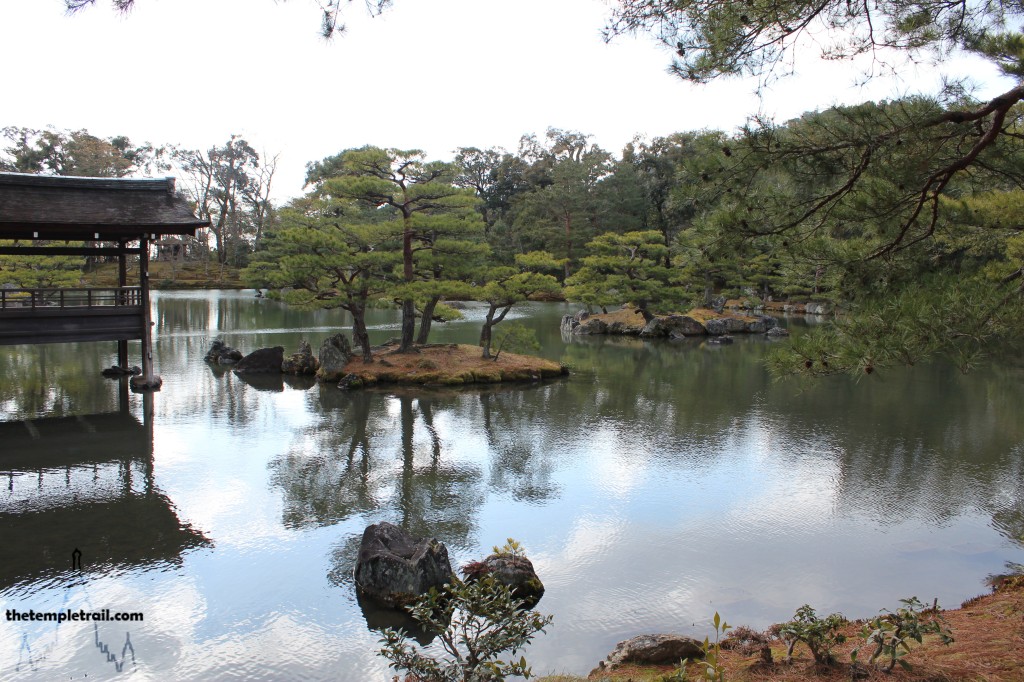
All around you the colours of nature seep into your vision, penetrating your soul. You become rested and peaceful and your slow stroll becomes all the more pleasurable. The islands of the pond make up a miniature microcosm and all around you the semi-forested hills transport you to a pure land of yore. The kaiyū-shiki-teien (strolling garden) is designed to be a Buddhist paradise based on the Western Pure Land of Amida Nyorai (Amitābha Buddha) and with each step you feel more tranquil. Looking at the pond, the ten islands change shape depending on the angle you view them from. The islands of Japan are represented, as are scenes from mythology and scripture.
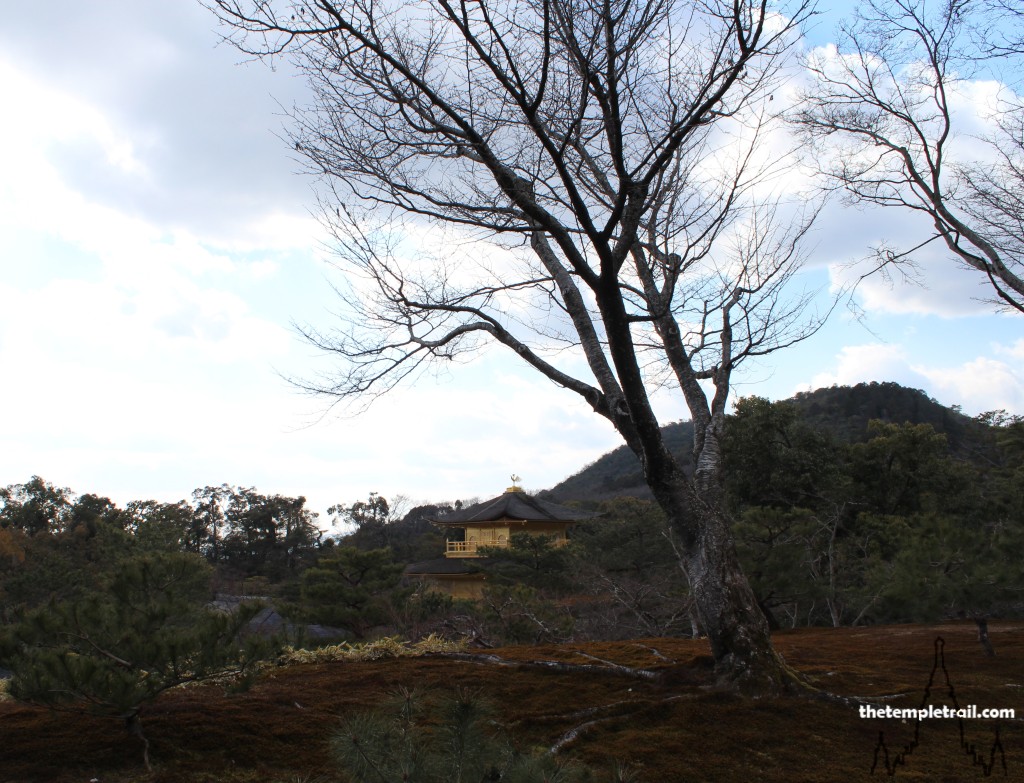
Continuing up through the heavenly landscape, past the Ginga-sen Galaxy Spring, the Ryūmon Taki waterfall and small shrines, you see the smaller upper pond. The Au-min-taku pond is said to never dry up and has just one island on which a small stone pagoda stands. The Hakuja-no-tsuka (mound in memory of the white snake) is a small representation of the Song Dynasty Lei Feng Pagoda in Hangzhou. The famous ancient Chinese story of Lady White Snake and her doomed love of a mortal man was popular in Japan as well as in China. The Pagoda in Hangzhou was built to imprison the immortal white snake and the lone island gives you the feeling of solitude that would be felt by her trapped soul. As you traverse the hill, you pass a set of stone Buddha carvings surrounded by coins. You decide to add to the pile and throw a few yen at the statues. Hoping that the act may bring you luck, you cheerily head on.
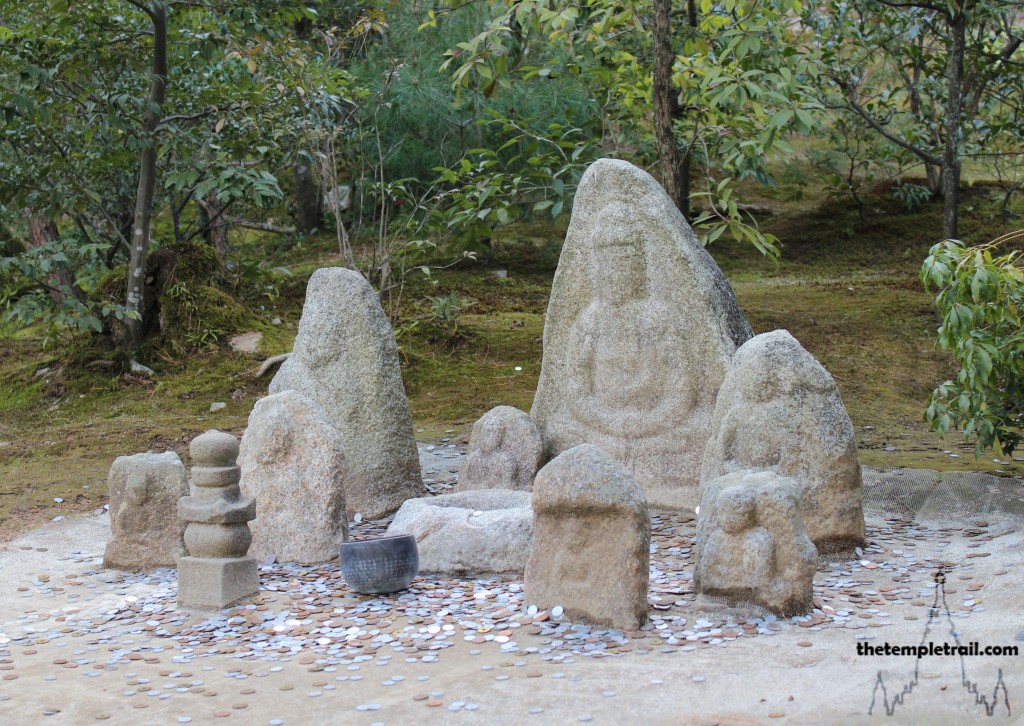
The golden building temporarily disappeared from view, obscured by the landscape, but soon it comes back into your sight-line as you near the Sekka-tei (Place of Evening Beauty) Cottage. The view is wonderful from this high point and the building you stand near is a classic tea house. Added during the Edo Period, it was the entertainment building for important visitors to the temple. As a mark of its importance it has a pillar made from heavenly bamboo (nandina). Not being a VIP, you move on to the Fudō-dō. This small temple is the hall of Fudō-myōō (Acala), a Vajrayāna esoteric Buddhist wisdom king. He is particularly venerated in Japan and despite this being a Mahāyāna Zen Buddhist temple, he has a hall here. Inside, a miraculous stone statue resides. It was made by Kūkai, the founder of the esoteric Shingon sect, in the 9th century. Crowds swell at the building as people struggle to gain his blessings. The immovable one protects the living and his devotees are keen to have his efforts directed their way. Amid the smoking incense, the temple bells are rung and mantras are recited. Next to this hive of activity is another, the visitors’ teahouse. People sit eating sweets and drinking matcha tea to revive themselves after the uphill climb.
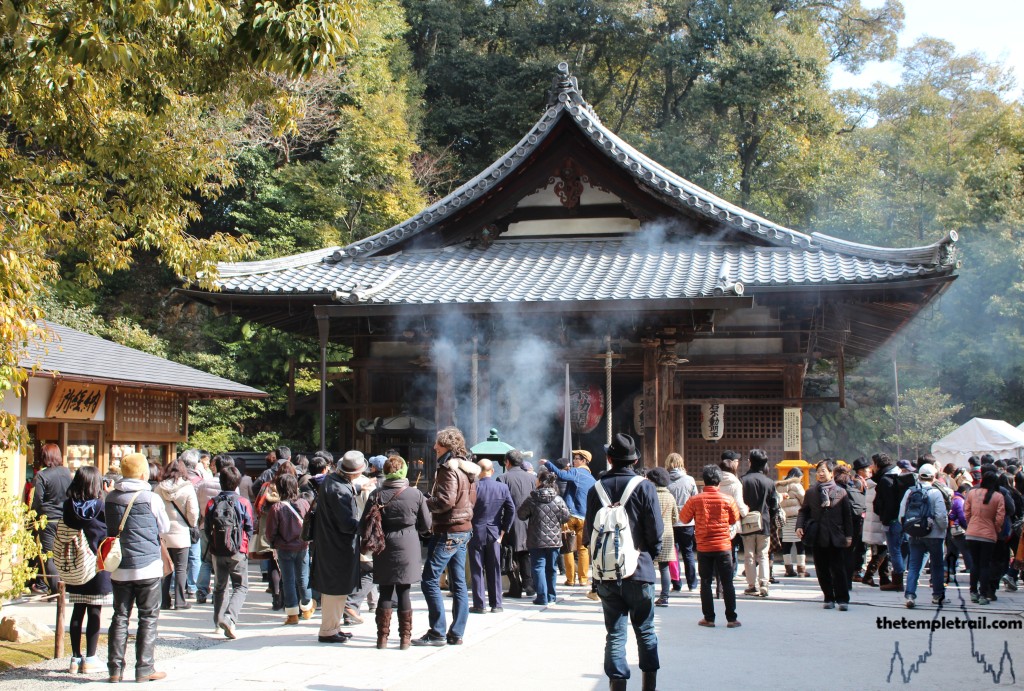
Feeling somewhat tired yourself, you slowly step out of the temple grounds. Although your body is in need of some refreshment, your mind and soul are fully revitalized. Outside of the temple grounds, even the quiet area you stand in seems chaotic. The temple has an ability to hide the crowds that flock there. You realize that you didn’t even notice the other people at the temple until you left the gardens. The grounds absorb the masses and you all fall into a collective trance. The true power of nature and magic seem to converge at Kinkaku-ji. Still under its spell, you wander to the roadside and continue on with your journey.
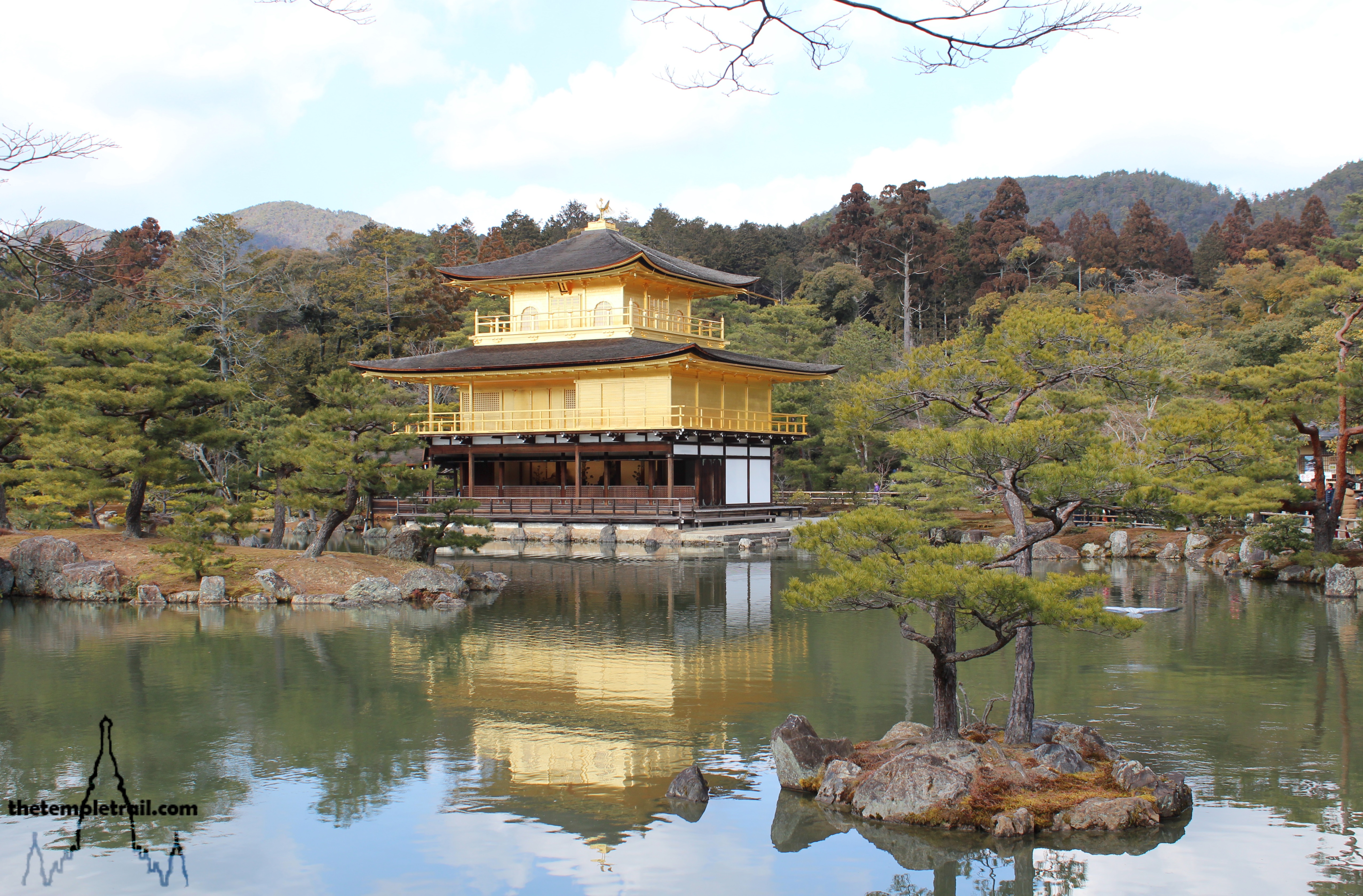
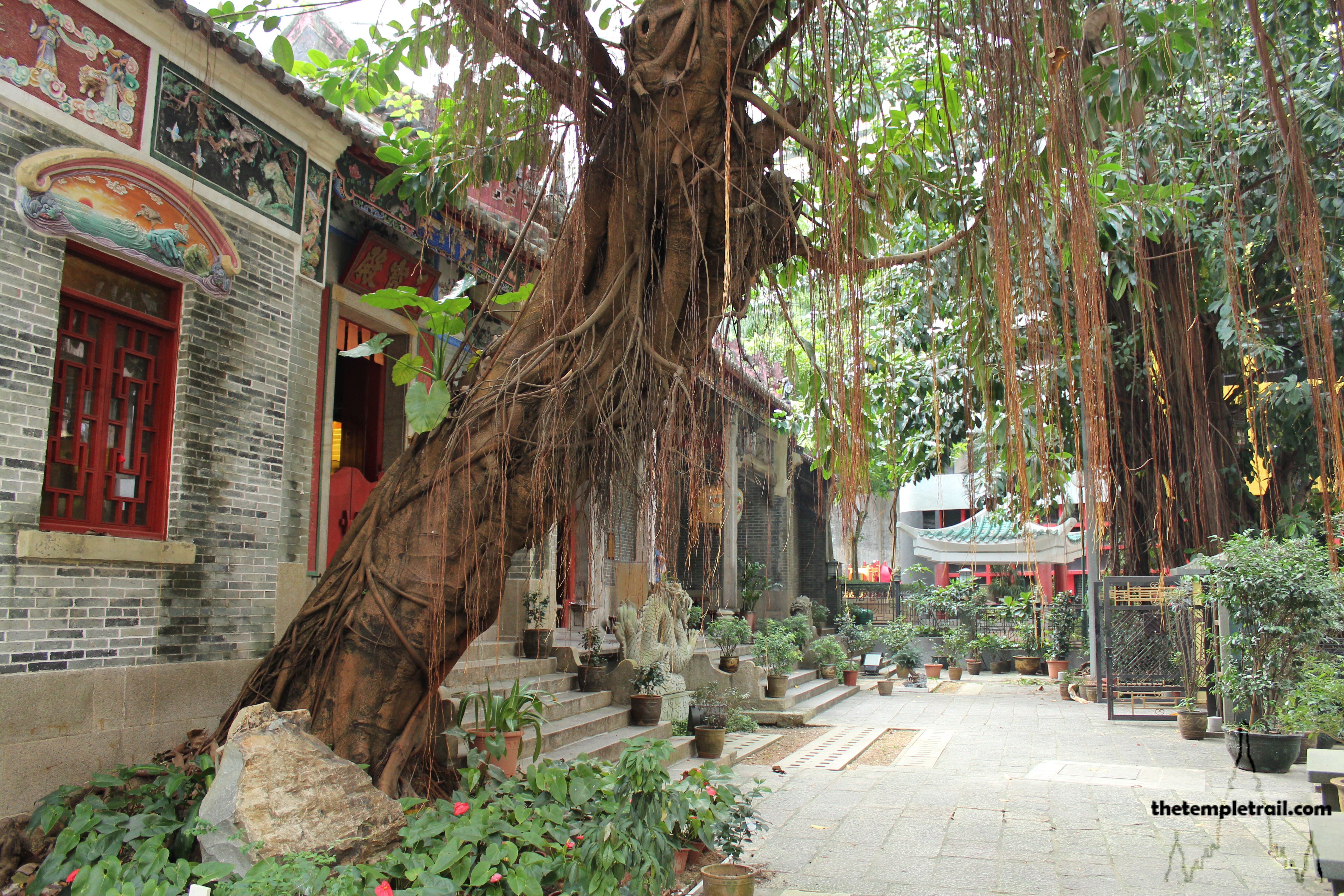
[…] The Temple Trail: Kinkaku-ji […]